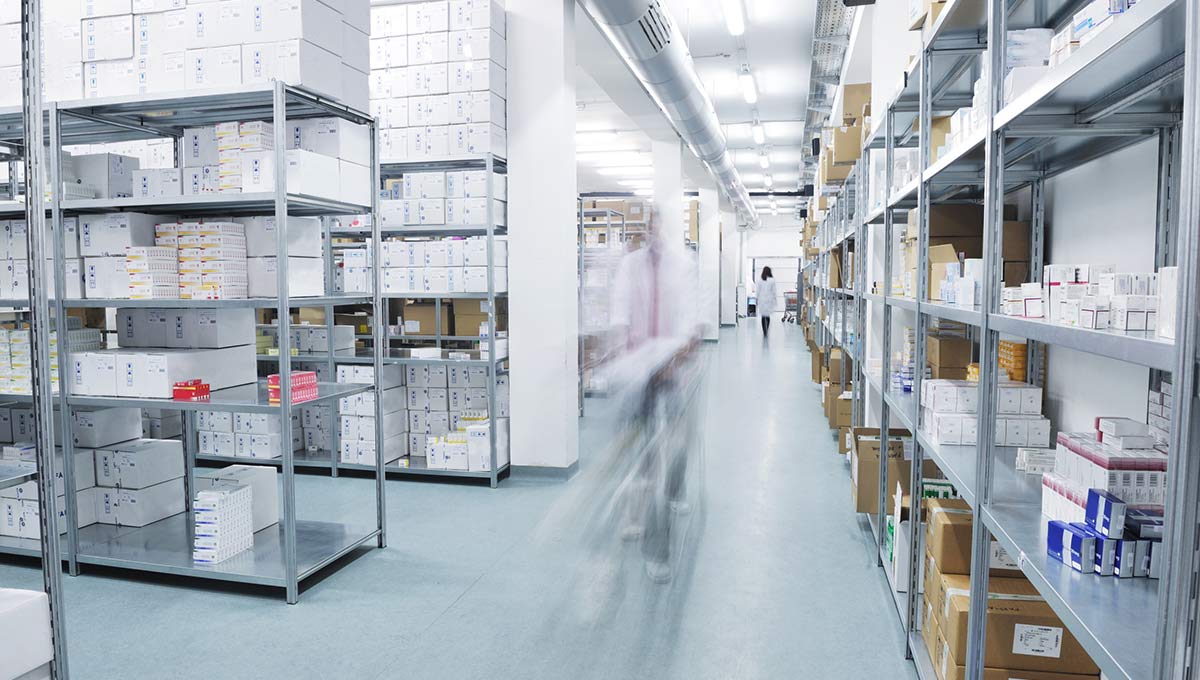Monitoring all temperatures from one central point
Ashtons Hospital Pharmacy Services is a highly respected and successful provider of specialist pharmacy services to independent hospitals, hospices and clinics in the UK.
Over many years Ashtons has developed a comprehensive range of services, specializing in support and advice on medication management and compliance, training for hospital staff, efficient medication delivery and documentation systems to support patient treatment.
Medicines are subject to stringent regulations and Ashtons’ clinical pharmacy services are tailored to meet the various Care Quality Commission, Healthcare Inspectorate of Wales, and Healthcare Improvement Scotland regulations.

The challenge
As well as helping its clients achieve compliance in all aspects of medicine management, Ashtons must also ensure that its own warehouse and distribution center are also meeting regulations as set out by the Medicines and Healthcare products Regulatory Agency (MHRA). The MHRA is responsible for regulating all medicines and medical devices in the UK by ensuring they work and are acceptably safe.
As part of MHRA inspections, there is a large focus on the cold chain for medicine storage and distribution. Any medicines stored in pharmaceutical fridges must be kept between 2°C and 8°C (35°F and 46°F); any drugs in ambient storage must be kept between 8°C and 25°C (46°F and 77°F).
If medicines go outside of these temperature ranges, and do not return to within an hour, then there is serious risk that the drug will be adversely affected. Obviously this has the potential to impact the chemical stability of the drug, potentially rendering it completely unsafe for use. In these situations the medicine must be destroyed to prevent it from reaching patients.
Previously Ashtons relied on traditional thermometers to monitor the temperature of the key storage areas. Temperatures were checked manually twice a day and recorded with pen and paper.
Ashtons did not consider this method to be ‘good distribution practice’. It was inefficient in terms of the time taken to perform manual checks, and also in terms of the potential for waste. Any uncertainty in the temperature monitoring would lead to products being destroyed and wasted when it may not have been necessary.

The first step
Initially Ashtons decided to implement EL-USB temperature data loggers in its warehouse. Loggers were placed on shelves, in cabinets – they even put loggers in shipping boxes to monitor the temperature of medicines while they were in transit to hospitals.
The EL-USB temperature data loggers were a major upgrade – giving Ashtons consistent round the clock monitoring of temperatures and an auditable ‘data trail’. The data from the loggers could be captured by connecting them to a PC or by using a mobile data capture device. This meant that if it was seen that a batch of medicines had gone out of range it could be quickly discovered whether temperatures had returned to range within the specified hour.
Over an extended period the analysis of this temperature data also enabled Ashtons to see seasonal trends in temperatures, particularly in transit, that enabled them to feedback into the packaging of medicines for dispatch to ensure that drugs were more likely to stay in range once they had left the distribution center.
While this approach offered huge benefits, it still lacked the element of constant real-time monitoring so that issues could be flagged and dealt with proactively rather than reactively.
Moving into the Cloud
As a result Ashtons took the decision to move to EL-WiFi sensors and the Cloud remote monitoring platform. This means that all of Ashtons’ sensors automatically upload the temperature logging data wirelessly to the central EL-WiFi Cloud platform. This has removed the need for the data to be manually captured from devices, as with the EL-USB loggers, streamlining Ashtons’ monitoring processes.
With all of the devices reporting into one central location it means that everyone in the business that needs to have oversight of temperature data has easy access, whenever and wherever they are. This gives Ashtons far more comprehensive 24/7 monitoring of temperature data.
Importantly the EL-WiFi Cloud remote monitoring system provides automated alerts whenever it is detected that the temperature is going out of range. These alerts can be sent, via text or email, to multiple people so that they can be responded to within seconds – keeping medicines within temperature ranges far more effectively. It also ensures that alerts can be responded to out of hours, an important capability.

The results
The enhanced monitoring enabled by EL-WiFi Loggers and the EL-WiFi Cloud have ensured that Ashtons is able to meet the daily monitoring requirements as laid down by the MHRA. Aside from the regulatory need, it also means that Ashtons can better safeguard the quality of the products it is sending to its customers.
The EL-WiFi Cloud system has also meant that Ashtons has been able to drastically reduce the waste from destroying products – delivering significant cost savings to the business.
EL-WiFi loggers have proven to be a very useful tool for our business. The fact that we are now able to monitor all of our temperature loggers from one central online platform has been a huge benefit for our operations. – both in terms of the time efficiency of our temperature monitoring and the efficacy of our compliance measures.
Kevin Fox – Director of Operations, Ashton’s Hospital Pharmacy Services


